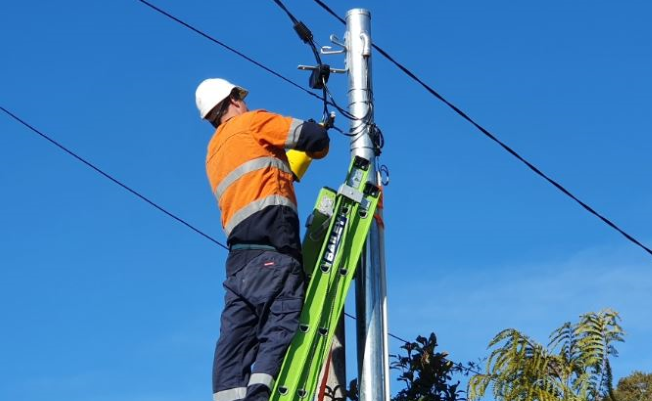Trenchless vs. Traditional: Choosing the Right Sewer Repair Method for Your Home

Facing a sewer line problem can be one of the more stressful home maintenance crises a homeowner confronts. When your drains backup, pipes crack, or persistent sewer odors develop, you’ll likely find yourself searching for a Sewer Company Near Me or Sewer Line Repair Near Me. One of the first—and most important—decisions you’ll need to make is: should you go with Traditional (excavation) repair or Trenchless Sewer Repair? Understanding the differences, along with the advantages and limitations of each, is key to making an informed choice for your home.
What Is Traditional Sewer Repair?
Traditional sewer repair—also called excavation repair—is the conventional method that’s been used for decades. It involves digging a trench along the path of the damaged pipe, removing the old line, installing a new one, and then backfilling the trench.
Pros
- Proven and straightforward: This is a time-tested method that most plumbing contractors are very familiar with.
- Full replacement: Because you remove the damaged pipe entirely, you’re not modifying or overlaying an existing line, so there’s no risk of inheriting weak or hidden damage.
- Handles severe damage: In cases of major collapse or severe misalignment, excavation is often the only viable option.
Cons
- Highly disruptive: Digging up your yard, driveways, patios, or landscaping can be invasive, messy, and expensive to restore.
- Longer timeframe: The full process—including excavation, pipe installation, and restoration—can take several days to weeks.
- Extra costs for restoration: You’ll often have to pay additional expenses to repair or replace landscaping, sod, pavement, walkways, etc.
What Is Trenchless Sewer Repair?
Trenchless sewer repair refers to methods that allow you to fix or replace a sewer line with minimal surface disruption. Only small access holes (also called “entry pits”) are needed rather than continuous trenches. Two common trenchless techniques are Pipe Bursting and Cured-In-Place Pipe (CIPP) Lining.
Pipe Bursting
A bursting head is pulled through the old line, fracturing it outward while pulling a new pipe (often HDPE) into place.
Because you’re installing a fresh pipe, you can even upsize to improve flow.
Sewer Lining (CIPP)
A flexible liner coated in resin is inserted into the damaged pipe and then inflated or inverted.
Once cured, it forms a jointless new interior inside the old pipe, sealing cracks and preventing soil infiltration or root intrusion.
Pros
- Minimal surface impact: Only small holes are needed, leaving lawns, driveways, and landscapes largely untouched.
- Faster turnaround: Many trenchless jobs can be completed in 1–3 days rather than weeks.
- Durability: Trenchless repairs are designed to last 50 to 100 years.
- Eco-friendlier: Less soil disturbance, fewer heavy machines, and reduced restoration needs.
Cons
- Higher initial per-foot cost: The advanced technology and materials can be more expensive per foot installed.
- Not always feasible: If a pipe is fully collapsed or severely misaligned, trenchless techniques may not work.
- Access and conditions limitations: In some soil or site conditions, trenchless may not be permitted or achievable.
Cost Comparison & Real-World Context
Because of surface restoration costs, trenchless options can often deliver better value despite higher base rates per foot. For example, in certain areas, typical ranges might be:
- Trenchless Methods (CIPP, pipe bursting): Costs can run from a few thousand to high‐teens, depending on pipe length, condition, and complexity.
- Traditional Excavation Repair: Usually lower per-foot, but once you add the cost of repairing lawns, driveways, sidewalks, and other infrastructure, the total project cost can skyrocket.
Thus, trenchless often saves money overall in many residential scenarios, especially when preserving landscaping or hardscape is a priority.
When to Use Traditional vs. Trenchless Repair
Here are guidelines to help you decide:
Choose trenchless when your sewer line has localized issues (cracks, corrosion, root intrusion), when you want to protect existing landscaping or hard surfaces, or when you need a faster, less invasive solution.
Choose excavation when the pipe is fully collapsed, drastically shifted, or site conditions simply won’t accommodate trenchless technology. Also, local building codes or access constraints might prevent trenchless methods.
Before deciding, start with a sewer camera inspection to assess the exact condition of your pipe. This helps any qualified plumber or sewer repair company choose the most suitable approach.
The Role of a Reputable Local Sewer Contractor
When you search for terms such as Sewer Company Near Me, Sewer Line Repair Near Me, Trenchless Sewer Repair, Trenchless Pipe Lining, or Pipe Bursting, you want a contractor who knows both methods and can recommend the right one based on the condition of your system—not just push one technology over another.
A good contractor will:
- Perform a video camera inspection to diagnose the issue precisely.
- Explain whether the problem is best addressed by trenchless or excavation techniques.
- Provide clear cost estimates including restoration work.
- Guarantee their workmanship and materials for the long term.
Neither trenchless repair nor traditional excavation is universally “best” — the right choice depends on the state of your existing sewer line, site conditions, and your priorities for cost, time, and property preservation. In many residential cases, trenchless methods (such as pipe lining or pipe bursting) provide a modern, less disruptive solution that can save time and reduce secondary repair costs. Yet, when damage is extreme or access is constrained, traditional excavation may still be your only ship to sail.
When you’re facing sewer line trouble, start with a trusted local sewer professional who can evaluate your situation and help you choose between trenchless and excavation approaches. That way, you’ll get the right repair method tailored to your home—not a one-size-fits-all solution.



